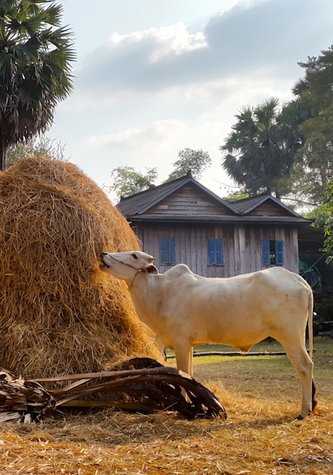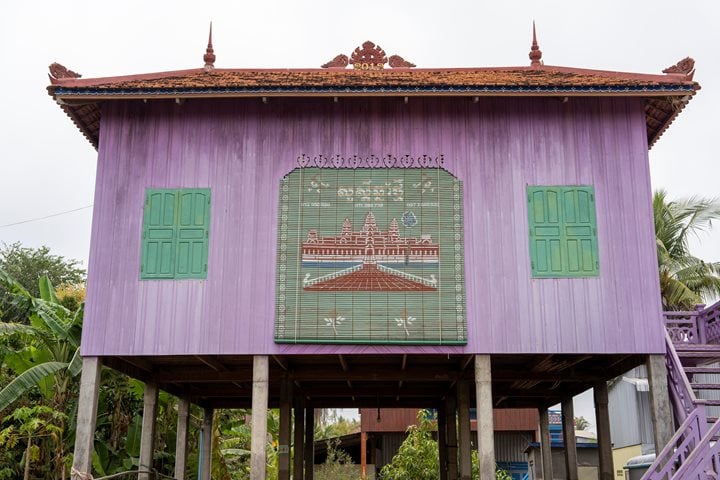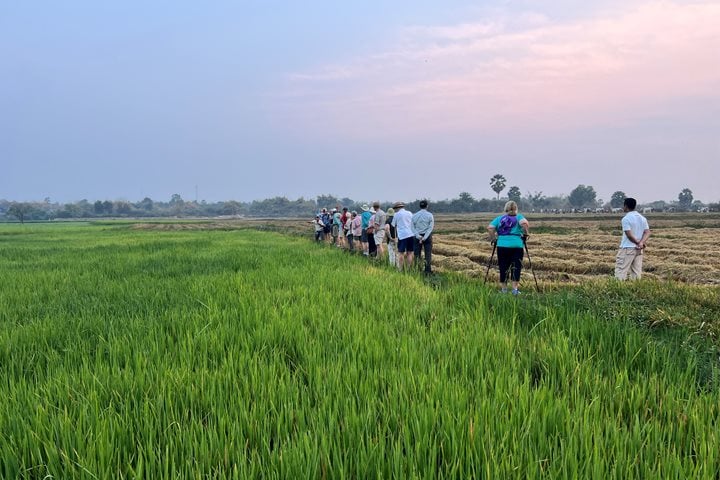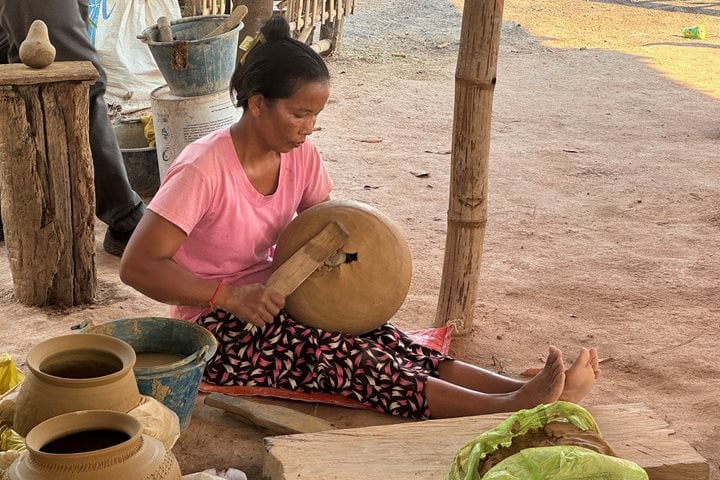As the sun rises over the Tonle Sap River, Jahan is moored at the autonomous port of Phnom Penh. Some of us go ashore with photo instructor Jennifer Davidson to catch some unique scenes of the Cambodian capital coming to life.
At 7:30 we leave Phnom Penh to sail up the Tonle Sap River to the province of Kampong Chhnang. This tributary of the Mekong originates from the Tonle Sap Great Lake, the largest freshwater lake in Southeast Asia. Teeming with various species of egrets, pond herons, and kingfishers, this stretch of our journey is a delight for nature photographers and bird watchers.
Jean-Michel Filippi, a French linguist who happens to double as a formidable historian, delivers an amazing lecture on the recent history of Cambodia, from its independence in the 1950s to the reestablishement of a modern government in 1993. The rise and fall of the Khmer Rouge after the Vietnam War, the geopolitical implications of the cold war and eccentric life of Norodom Sihanouk, the King Father of Cambodia, have no more secrets for us!
In the early afternoon, Jahan reaches the eponymous provincial capital of Kampong Chhnang and we disembark to visit Andong Russei. Walking through this small village, we discover an authentic rural landscape that has little changed since the Angkorian period. Rice fields, orchards, and local artisans are all around us. Cows and chickens are roaming free around wooden houses on stilts with thatch roofs, children are afoot.
Our guides Rithy and Punloeu introduce us to Mr. Ree, a charismatic villager living with his wife and five children. At 65, he demonstrates his unbelieveable agility by climbing to the top of a 50 feet high sugar palm tree (Borassus flabellifer) to collect its sap, an activity he has conducted every day since he was 16. The sugar palm tree is a miracle plant: its sap is used to produce palm sugar and palm wine, the leaves can be weaved into thatch and the wood is used to produce furniture and kitchen utensils. Moreover, mixed with earthworms (!), it is a medicinal plant against measles.
Next to Mr Ree’s house, another family is busy producing dozens of stunning terracota potteries. It is indeed an ancient tradition in Cambodia, going back thousands of years! The clay pots produced in this particular village are called ‘Chhnang’—a type of recipient so famous that it gave its name to the whole province! Only women produce them, relying on skills transmitted from mother to daughter for generations. Walking backwards while repeatedly hitting the clay with a small wooden tool, the artisan will shape the raw material into a perfect cylinder. Turn after turn, the characteristic shape of the chhnang cooking pot will emerge, complete with a lip and tasteful decorations, before being fired on a bed of hay. Amazingly the same type of cooked clay pots are regularly found while excavating archaeological sites from the Angkorian period, around the 12th century.
Leaving the village of Andong Russei, we return to the Tonle Sap river where we enjoy the sunset while cruising along a floating village mostly inhabited by fishermen of Vietnamese ethnicity.
The photographs used in this Daily Expedition Report have all been taken with a Samsung Galaxy S5 smartphone, an application of the lesssons learned from our photo instructor Jennifer Davidson during her morning presentation on Smartphone Photography.







